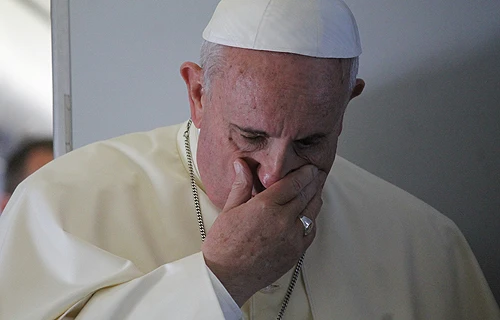
Vatican City, May 25, 2022 / 03:08 am (CNA).
Pope Francis said on Wednesday that his heart was broken by the killing of 19 children and two adults at an elementary school in Texas.
Speaking at the end of his general audience in St. Peter’s Square on May 25, he said: “My heart is broken for the massacre at the elementary school in Texas. I am praying for the children and the adults killed and their families.”
“It is time to say enough to the indiscriminate trafficking of weapons. Let us all work hard so that such tragedies can never happen again.”
His words were greeted with applause by pilgrims.
The pope was speaking after a gunman opened fire at Robb Elementary School in Uvalde, southwest Texas, on May 24, killing 21 people.
Texas Governor Greg Abbott said that officers were believed to have killed the shooter, a local 18-year-old identified as Salvador Ramos.
The U.S. Conference of Catholic Bishops (USCCB) said on May 24 that the country was facing an “epidemic of evil and violence.”
The USCCB’s public affairs director Chieko Noguchi said in a statement: “There have been too many school shootings, too much killing of the innocent. Our Catholic faith calls us to pray for those who have died and to bind the wounds of others, and we join our prayers along with the community in Uvalde and Archbishop Gustavo García-Siller.”
“As we do so, each of us also needs to search our souls for ways that we can do more to understand this epidemic of evil and violence and implore our elected officials to help us take action.”
Hours before the general audience, San Antonio Archbishop Gustavo Garcia-Siller appealed to Pope Francis to pray for the victims of the shooting in his archdiocese.
He tweeted: “Holy Father Pope Francis, say some prayers for the souls of our little ones killed today and two teachers. Uvalde is in mourning. The families are having a very dark time. Your prayer will do good to them.”
He added in Spanish: “Gracias por ayudarnos. Queremos ser como Jesús. Cuente con nuestra oración” (“Thank you for helping us. We want to be like Jesus. Count on our prayers”).
If you value the news and views Catholic World Report provides, please consider donating to support our efforts. Your contribution will help us continue to make CWR available to all readers worldwide for free, without a subscription. Thank you for your generosity!
Click here for more information on donating to CWR. Click here to sign up for our newsletter.






From cradle to coffin life is sacred and a precious gift.